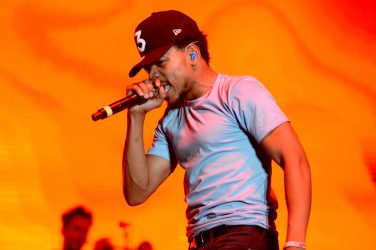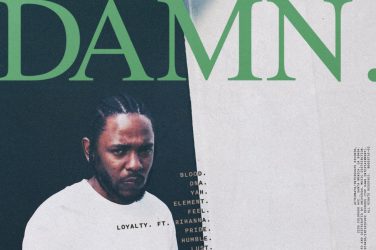ISSUE #0: THE MUSIC ISSUE
By Michael Addbayo
Hip-Hop
The evolution of Chief Keef certainly tracks the growth of a young inner city man’s rise to stardom. Since the beginning of Hip-Hop, the genre has proved over and over to be the pulse of the forgotten perspective that reigns in America’s inner cities. Over the years we have seen the evolution of Hip-Hop reach audiences worldwide. Today, many sub-genres of Hip-Hop have risen to the spotlight of pop-culture. In January 2018, The Business Insider wrote an article discussing how Hip-Hop had now surpassed Rock & Pop as the most popular music genre in the United States. This realization is an incredible discovery due to the fact that Hip-Hop began as an expression performed by the less fortunate lower class of the Bronx, New York. The art form served as a activity to keep African American & Hispanic youth occupied, while steering away from gang-violence and crime. The multiple elements of Hip-Hop include Rap, Graffti, B-boying, DJ/Production, and some may argue Fashion as well.
From Al Capone to Larry Hoover, Chicago has always been perceived as a gangster city. The corrupt aurora of the city has left many minorities feeling the need to develop street organizations of their own to feel safe & secure in their own neighborhoods. In the 1990s, a lot of these organizations lost their structure due to the death & incarceration of their leaders. This ultimately left street gangs disorganized with no sense of vision or guidance. Once upon a time, these organizations were set out to have a positive influence on their neighborhoods but this goal quickly went up hill. In 2016, Chicago homicides outnumbered the amount of U.S. killings in Afghanistan but since 2011 many have already nicknamed the city “Chiraq, Drillinoisâ€. This nickname was reportedly coined by Chicago Rapper “King Louie†who many believe started the drill music scene.
The roots of Drill Music come out of gritty streets of “Chiraq†where young artists lyrically paint the picture of the harsh reality they live in. The raw emotion of this high energy music genre has captured the attention of people all over the world. A majority of these people have been inner-city youth who relate to the violent struggles of living in a dangerous environment. Before Drill Music, Chicago’s hip-hop scene really didn’t have a distinct sound that was recognized worldwide. Older Chicago artists like Kanye West, Twista, Common, & Lupe Fiasco all presented unique sounds to the world that portrayed their own perspective of the city. As Drill Music was on the rise, it seemed like Chicago finally found its gritty soundtrack that we all longed for. Chicago’s gangster city perspective now has an outlet through hip-hop to express itself.
Chief Keef
In 2011 Keith Cozart also know as Chief Keef, started to gain popularity in the Chicago area for making a series of low budget music videos shot by local directors. Most of these videos were shot while he was on house arrest and only including performance scenes of Keef in his house and around his neighborhood. Keef was only 16 years old at the time. His music was posted on numerous social media sites such as Youtube, Facebook, Twitter & Instagram. His buzz was completely organic and his rise to popularity was the result of his loyal fanbase. The drill music artist captivated his crowd by his unorthodox rapping style and his gangster persona. Keef’s music was very hard to understand unless you were familiar with Chicago slang and references. The rebel energy of his music started to influence all of Chicago’s youth as they bought in to his sound and eventually the rest of the nation caught up in 2012. This was quite impressive for a Chicago hip-hop artist due to the fact that he had no industry connections. After releasing 2 underground mixtapes, his hit single “I Don’t Like†was co signed by Kanye West who later then came out with a remix to the track featuring Big Sean, Pusha T, and Jadakiss. This marked the first of many milestones in his career.
By June of 2012, Chief Keef signed his first record deal with Interscope Records worth $6,000,000 which included his own imprint entitled Glory Boyz Entertainment (GBE). “Keef also agreed to a multi-movie film deal through Interscope film division. On top of this, he will be getting his own line of Beats By Dre headphones, titled “Beats By Keef”†(Lilah, 2012). On December 8th, 2012, Keef released his debut studio album “Finally Rich†which sold 50,000 copies during its first week. It seemed like the Chicago native was finally living out his dream until his troubled past started to catch up with him.
Till this day, Keef has had a long history of trouble with the law. He’s also known for his nonchalant attitude that’s made him lose out on numerous opportunities to elevate his career. Missing out on TV appearances and skipping video shoots are only a couple of the opportunities Keef choose to pass up on. Shortly after the release of “Finally Rich†he was sentenced to 60 days in juvenile detention for violating his probation stemming from the previous gun conviction. Slowly but surely, the industry that once praised Keef now overlooked his success and eventually took advantage of his influence. But can we blame this entirely on Keef? He was merely a troubled youth from Chicago’s South Side who signed a multi-million dollar deal at only 17. We can only imagine the type of pressure and power that he had at such a young age. I think Keef was too young to realize the amount of influence he had himself. African American inner city youth are usually brought up in a caged in environment where they are taught to settle for less. Many of these kids don’t realize how far their ideas can really go.
What most of the world doesn’t know is that Keef is rumored to have Aspergers syndrome. Aspergers is a “developmental disorder affecting ability to effectively socialize and communicateâ€. This may have very well played apart in his behavior over the years. Whether or not this is true, we can be sure that there has always been something blocking Keef from true superstardom.
How Chief Keef Changed Hip Hop Forever
Today in hip hop, Chief Keef’s influence can be seen from all around the board. Many artists who have been influenced by Keef’s story have followed his blueprint on the road to starting their own music career. His sound was revolutionary and many believe that he was the first “mumble rapper†of this new generation. Mumble rap is a rising sub-genre of rap where rappers basically mutter the words to a track to capture a particular vibe. Some prominent mumble rappers of today include: Lil Pump, Playboi Carti, Lil Uzi Vert, and Lil Yachty. All of these rappers have gained large amounts of success and have received millions of streams on their music. Lil Uzi Vert was even nominated for a grammy in 2018. Chief Keef paved a way for this sub-genre to thrive.
One element of Keef’s music that was so intriguing was the way he used his ad-libs. He created the “Ayy†flow. The “Ayy†flow is when a rapper says a line and then ad-libs “ayy†or “yah†after. The “ayy†flow has been used by grammy award winning artists like Kendrick Lamar and Drake.
Keef’s gangster persona was also highly influential. At the age of 17, Keef would have numerous music videos with guns pointed at the camera like a scene of an old mobster movie. In today’s hip-hop they are many artists with similar styles to Keef that adopted this gangster persona. Some of these artists include: 21 Savage, Kodak Black, NBA Youngboy, Tay-K, and YBN Namair. Besides 21 Savage who is 25 years old, all of these other rappers named are under 21 years old (Kodak makes 21 in June 2018). Young rappers with a gangster persona was nearly unheard of before Chief Keef but now there seems to be a whole wave of them on the rise.Popular rapper Danny Brown once explained why Chief Keef was one of his favorite artists: “My favorite song of his is “Laughing to the Bank” [laughs]. That’s some Sex Pistols-type sh**. Remember when everybody said that Odd Future was punk rock? To me, Chief Keef is totally punk rock. Like, the melodies he uses on his album– it’s like he’s not even rapping no more, he’s just singing. You could swap those synths and keyboards with guitars and f**king crazy drums and he’ll be a rock star.”
In the midst of Keef’s rise to fame in 2012, the spotlight on Chicago hip-hop was larger than ever before. Other prominent Chicago rappers started to capture the attention of the nation as well. It seemed like a domino effect from all of the attention Keef was getting from around the world. From 2012-2015 many Chicago artists signed record deals with major record labels. These artists included: King Louie, Lil Reese, Vic Mensa, Lil Durk, Lil Bibby, and etc. Besides Keef, Chance The Rapper was the second most popular Chicago rapper at the time. Chance choose to go the independent route and eventually went on to win a grammy. Looking at Chicago’s hip-hop scene in 2018, many other artists have gained the confidence to also start careers of their own. The gangster city now has a familiar sound of music that depicts its reality. Chief Keef introduced the world to the grimy streets of Chicago and because of his efforts, he changed hip-hop forever.







Show Comments (6)
jacquarie
This article is very educational and can teach people from different regions about chief keef and chicago.
GCP
GCP, i like how this article explains the evolution of Cheif Keef’s career and his contributions to his brand of music and how he helped bring trap music as a bearer of hip hop as a mainstay in urban culture.
Naim
I like how they gave Keef his credit on starting this “wave”.
Naim
I like how they let it be known that Keef started this “wave”.
Lawrence Lloyd
Keef made it thru many struggles to get where he at now
Jabril Dillard
Chief Keef influenced a whole new generation of music with his unique style that, at the time, no one had ever heard before.